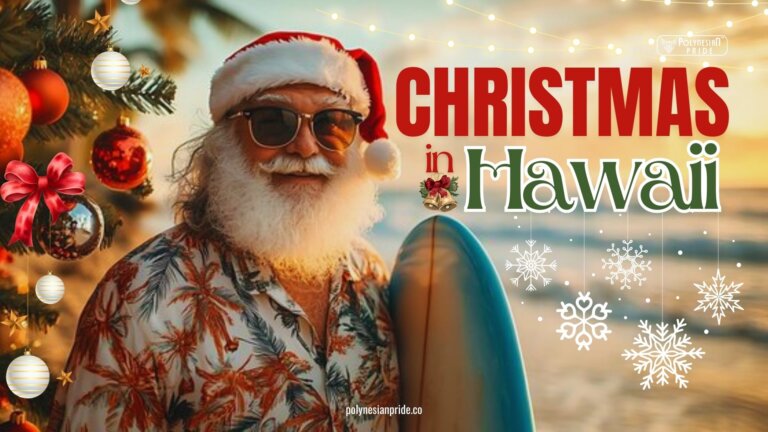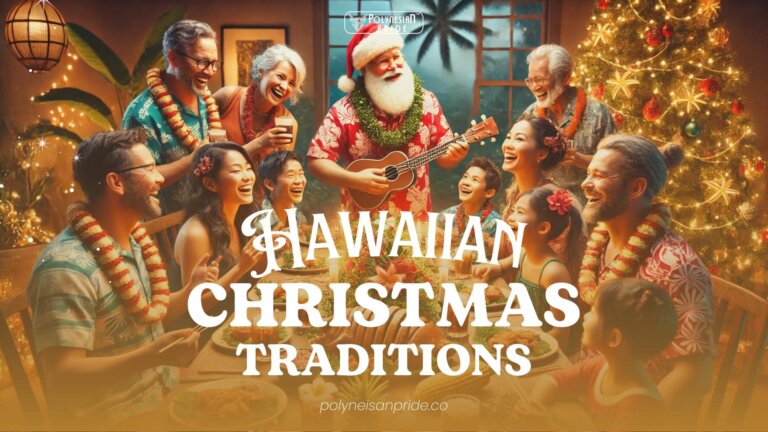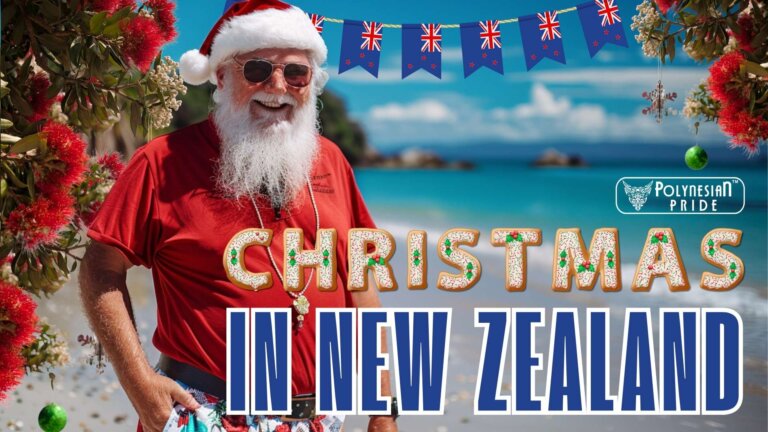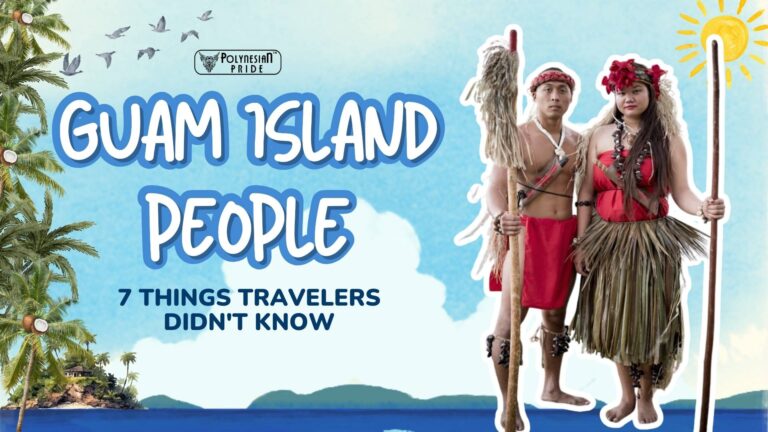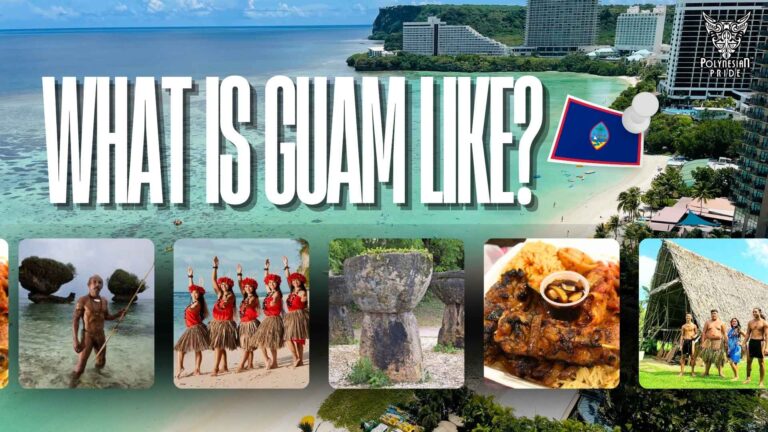Tongan People: The Spirit of the Friendly Islands
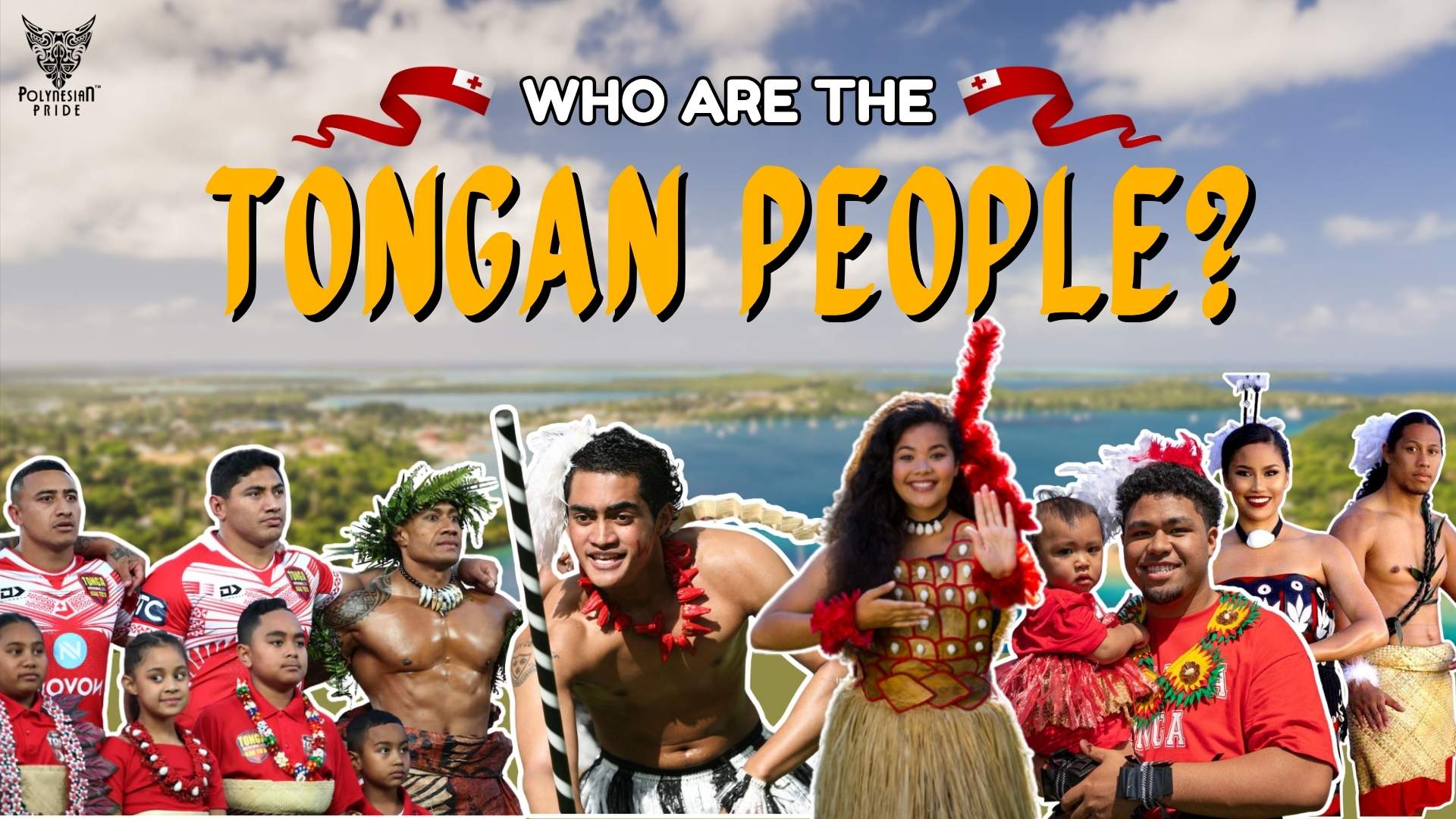
Who Are the Tongan People?
The Tongan People are the heart of the South Pacific — warm, proud, and deeply connected to family and faith. Known as the “Friendly Islands”, Tonga is the only Polynesian kingdom never fully colonized, where visitors remember not just its beaches, but the smiles, songs, and generosity of its people.
Geography of the Kingdom of Tonga
Location of the Tonga Islands in the Pacific
The Kingdom of Tonga lies in the South Pacific Ocean, about 2,000 km northeast of New Zealand and 800 km southeast of Fiji. Part of the Polynesian Triangle, it shares deep cultural ties with Samoa and Tahiti.
Known as the “Friendly Islands,” Tonga offers peace, authenticity, and a timeless rhythm far from busy resorts. Positioned near the International Date Line, it’s among the first places on Earth to greet the sunrise.
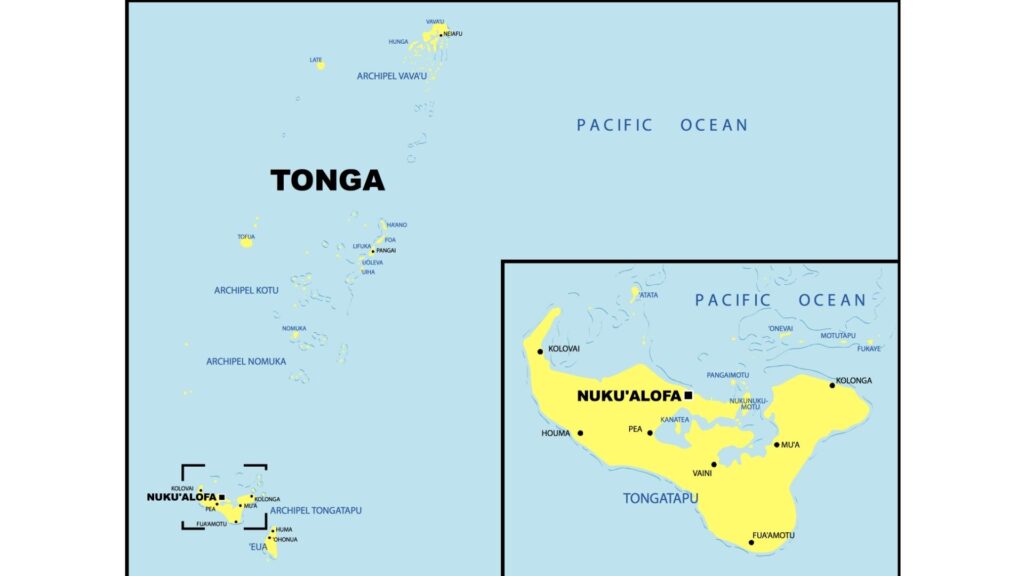
The Three Main Island Groups of Tonga
Tonga consists of more than 170 islands, though only 36 are inhabited. These islands are divided into three main groups, each with its own landscape and cultural identity:
- Tongatapu Group: The southernmost cluster and the political heart of Tonga. It’s home to Nukuʻalofa, the capital city, the royal palace, and most of the nation’s population. The flat terrain makes it ideal for farming and traditional village life.
- Haʻapai Group: The central region, known for its pristine beaches and tranquil pace. Haʻapai is often described as “the soul of Tonga,” where traditions remain strongest and tourism feels truly local.
- Vavaʻu Group: The northern islands, famous for sailing, diving, and whale watching. From July to October, humpback whales migrate through Vavaʻu’s calm waters, creating one of the Pacific’s most awe-inspiring natural experiences.
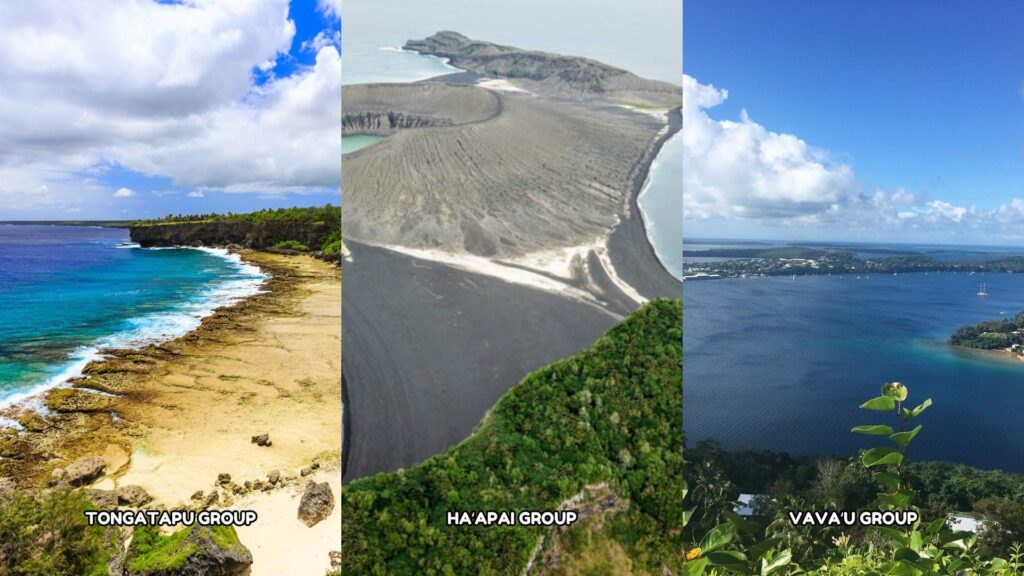
Each island group contributes something unique to Tongatapu’s heritage, Haʻapai’s authenticity, and Vavaʻu’s adventure, together forming the living geography of the Tongan People.
Natural Landscapes and Volcanic Origins
Tonga’s scenery combines coral atolls and volcanic islands like ʻEua and Niuafoʻou.
The 2022 Hunga Tonga–Hunga Haʻapai eruption showcased the islands’ power and resilience — Tongans rebuilt quickly, guided by community spirit.
With its tropical climate, fertile soil, and rich marine life, Tonga is home to coconut palms, breadfruit trees, and vibrant coral reefs teeming with fish and turtles.
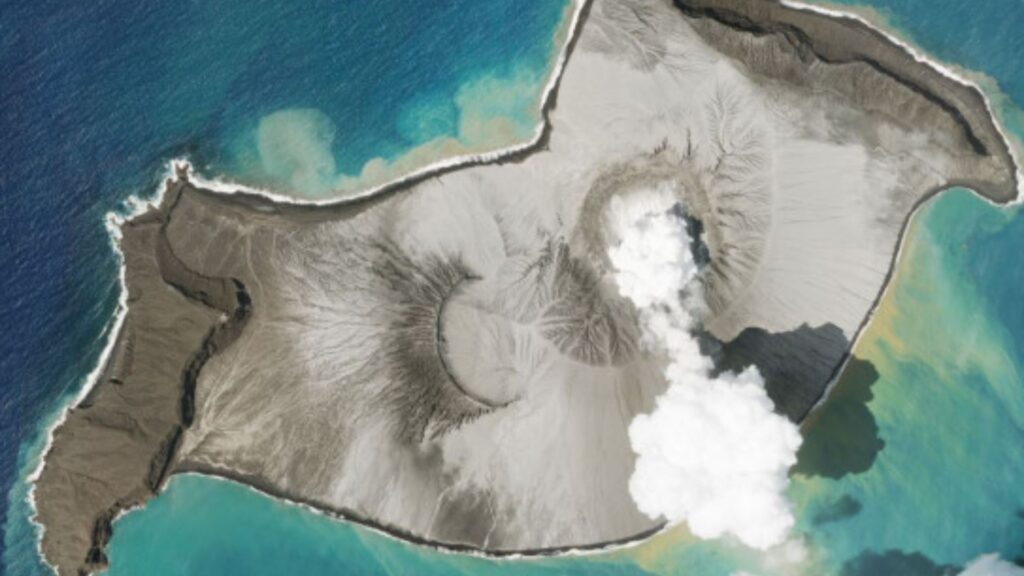
Origins and History of the Tongan People
Ancient Roots: The Lapita People and Early Settlements
The story of the Tongan People began more than 2,800 years ago with the arrival of the Lapita people, the ocean-faring ancestors of the Polynesians. These skilled navigators brought advanced pottery, farming techniques, and a deep spiritual connection to the sea — a bond that still defines Tongan identity today.
The Rise of the Tuʻi Tonga Empire
By the 10th century, Tonga had become the center of the mighty Tuʻi Tonga Empire, one of the most advanced and organized societies in the Pacific. Its influence extended across modern-day Samoa, Fiji, and parts of Micronesia, creating a network of trade, culture, and diplomacy.
Divine Kingship and Social Hierarchy
The Tuʻi Tonga rulers were both political and spiritual leaders — often regarded as semi-divine. Their governance combined religion and ceremony, maintaining social harmony through a structured hierarchy that valued loyalty, service, and respect.
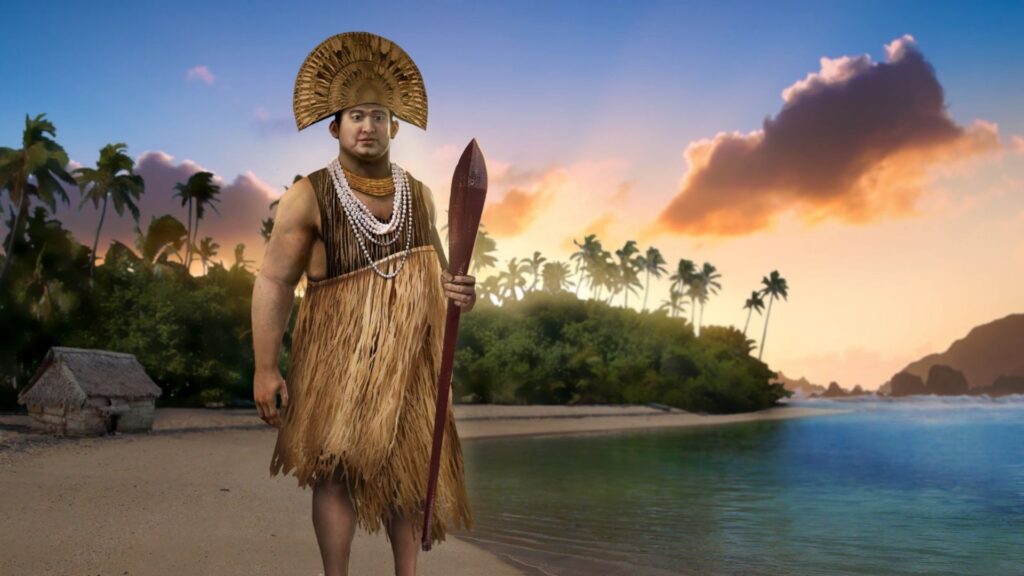
European Contact and the “Friendly Islands”
In the late 18th century, British explorer Captain James Cook visited Tonga and was captivated by the warmth of its people. During a grand festival held in his honor, he famously named the islands the “Friendly Islands”, a title that still defines Tonga’s reputation for hospitality.
The Arrival of Christianity and Social Change
During the 19th century, Christian missionaries introduced new beliefs that blended with traditional customs. Rather than erasing their heritage, the Tongans incorporated Christianity into daily life, creating a unique fusion of faith and culture that persists to this day.
Path to Independence and the Modern Monarchy
In 1900, Tonga became a British protected state while maintaining self-rule. When it gained complete independence in 1970, it proudly preserved its royal lineage. The current monarch, King Tupou VI, continues this legacy — leading the world’s only surviving Polynesian monarchy and symbolizing Tonga’s resilience and sovereignty.
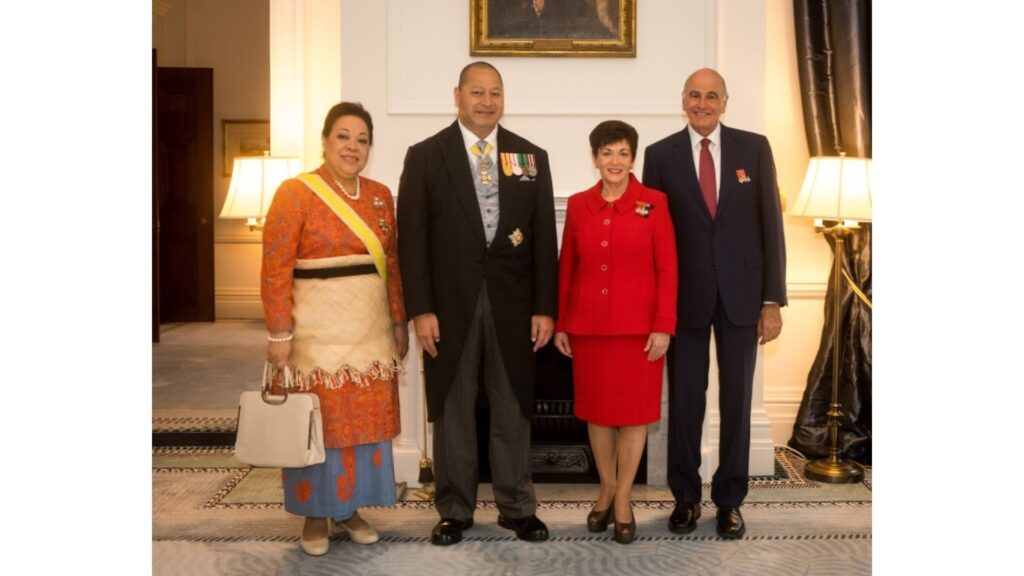
Quick Timeline Summary of Tongan History
- c. 800 BCE: Arrival of the Lapita people, early ancestors of the Tongans.
- 10th century CE: Formation of the Tuʻi Tonga Empire, expanding influence across Polynesia.
- 14th–17th centuries: Peak of empire’s power; cultural and trade dominance in the Pacific.
- 1773–1777: Captain James Cook visits Tonga, naming it the “Friendly Islands.”
- 1800s: Introduction of Christianity; blending of faith and traditional customs.
- 1900: Tonga becomes a British protected state, retaining local governance.
- 1970: Official independence; the Kingdom of Tonga was recognized as a sovereign state.
- Present day: Reign of King Tupou VI; Tonga remains the only independent Polynesian monarchy.
Population, Language, and Community
Population and Demographics of Tonga
The Kingdom of Tonga is home to about 104-106,000 people (as of 2024), making it one of the smaller nations in the Pacific, but its cultural and social footprint extends far beyond its borders.
Most Tongans live on Tongatapu Island, especially around Nukuʻalofa, while smaller populations reside in the island groups of Vavaʻu and Haʻapai. Villages remain the heart of community life, where families share resources, meals, and responsibilities.
The population is predominantly Polynesian, with strong family networks known as kainga. These networks extend through multiple generations and are deeply embedded in Tongan identity, ensuring that everyone has a place and a purpose within the community.
Despite gradual urbanization, traditional values such as respect, cooperation, and community service remain vital pillars of everyday life.
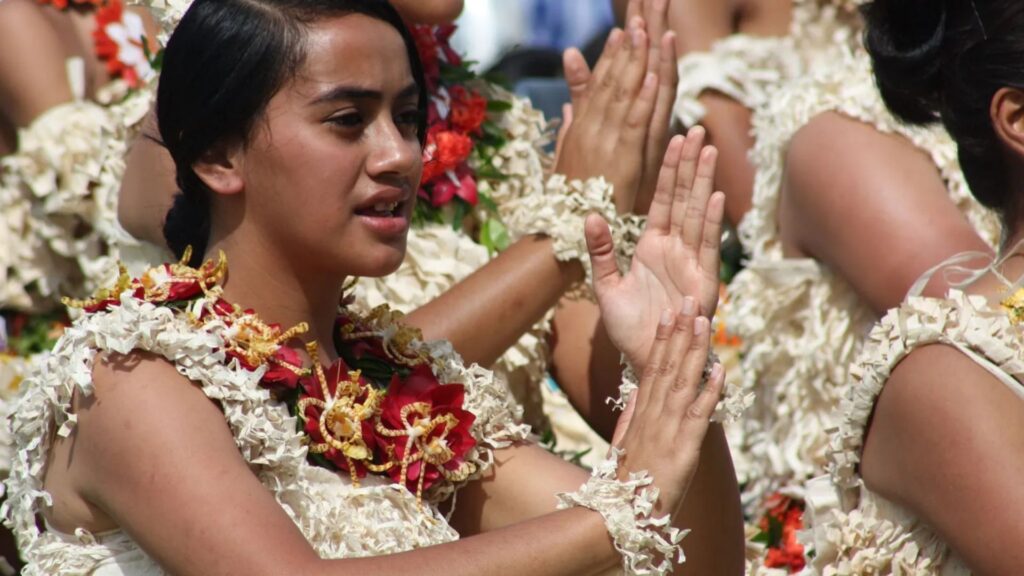
The Tongan Language (Lea Faka-Tonga)
The Tongan language, known locally as lea faka-Tonga, is central to the nation’s cultural identity. It belongs to the Austronesian language family, closely related to Samoan and Hawaiian, reflecting shared Polynesian roots.
Tongan is a melodic, formal language, often used to express deep respect through its vocabulary and tone. Distinct honorific levels exist for addressing nobles, elders, and the monarchy — showcasing how language reinforces social harmony.
Alongside Tongan, English is widely spoken, particularly in schools, business, and tourism. The bilingual nature of Tonga helps connect locals with the broader world while preserving traditional expression at home.
For visitors, learning simple greetings like:
- “Mālō e lelei” – Hello
- “Fēfē hake?” – How are you?
- “Mālō ʻaupito” – Thank you very much
…is an easy way to earn a smile and connect genuinely with locals.
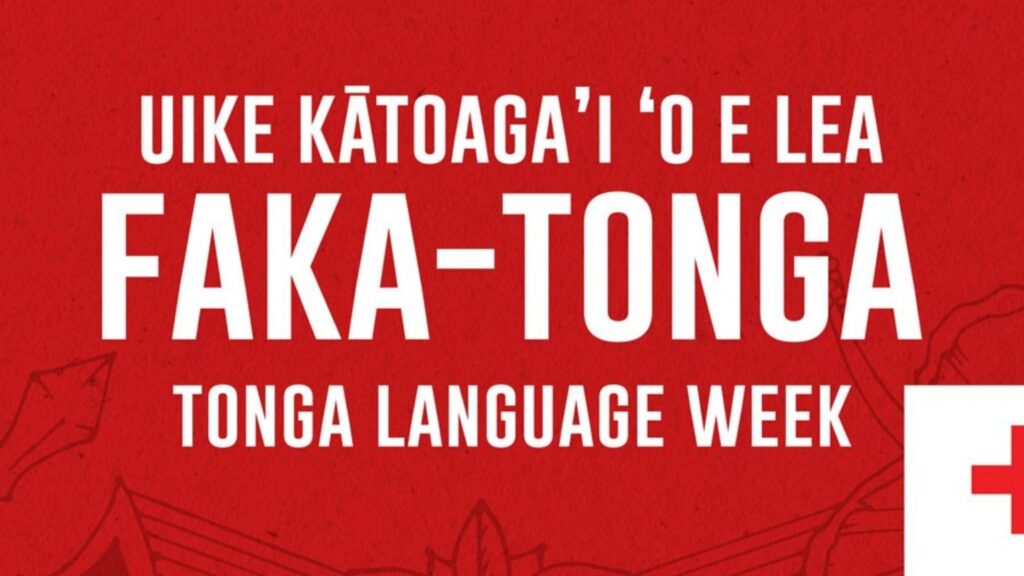
The Tongan Diaspora Around the World
One of the most remarkable aspects of the Tongan People is the strength of their global diaspora. In fact, more Tongans live abroad than in Tonga itself, with an estimated 150,000+ people spread across New Zealand, Australia, the United States, and the United Kingdom.
Community and Identity Abroad
Wherever they go, Tongans maintain strong ties to family and homeland. Churches, cultural associations, and rugby clubs serve as gathering places where language, music, and traditional dances are passed on to younger generations.
In cities like Auckland, Sydney, and Salt Lake City, Tongan festivals light up the streets with vibrant colors, choirs, and island food — offering a taste of the Friendly Islands thousands of kilometers from the Pacific.
Economic and Cultural Connection to Home
Remittances from overseas Tongans play a crucial role in supporting the local economy, funding education, infrastructure, and daily life for relatives back home. Yet their influence extends beyond money — it includes ideas, skills, and cultural exchange that continually strengthen the connection between the islands and their people abroad.
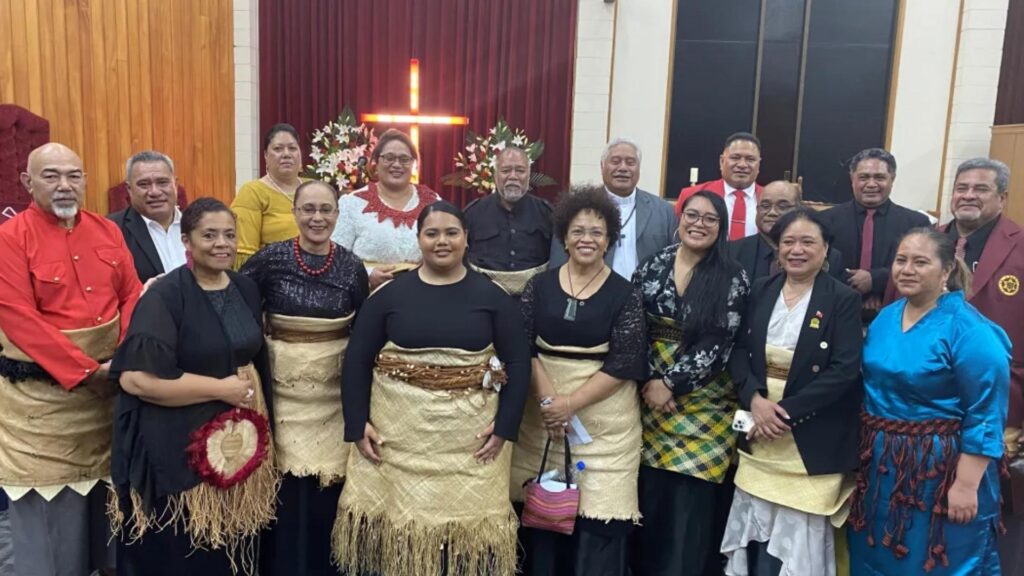
Tongan Traditions and Culture
At the heart of Tonga lies a philosophy known as “Anga Fakatonga”, or “The Tongan Way.” It represents values of respect, humility, and harmony that guide every aspect of life, from family relationships to public ceremonies.
The Tongan Way: Respect and Community
In Tonga, age and hierarchy are deeply respected. The eldest in a family holds authority, and younger members show deference through language, gestures, and service.
This structure, rather than creating distance, fosters unity, a shared understanding that each person has a role in the collective good.
Religion also plays a pivotal role. Christianity, introduced in the 19th century, blends seamlessly with ancient customs. Sunday is a sacred day of rest and worship.
The streets grow quiet, church bells echo across the islands, and families gather for shared meals that often stretch into the afternoon.
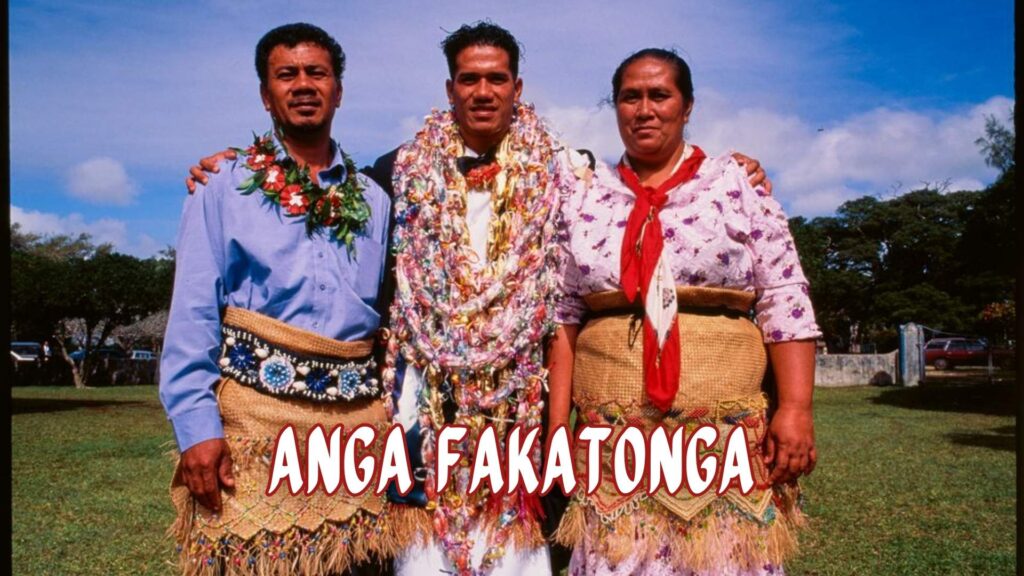
Festivals, Dance, and the Arts
Music, dance, and celebration lie at the heart of Tongan culture—a vibrant reflection of pride, history, and community. These traditions connect generations, turning every performance into a living expression of identity.
The most famous is the Lakālaka, a group performance that combines poetry, movement, and song, recognized by UNESCO as a Masterpiece of the Oral and Intangible Heritage of Humanity.
The rhythmic Tongan drums, graceful hand gestures, and chants narrate stories of love, nature, and heroism. Each performance isn’t just entertainment, it’s history in motion.
Throughout the year, Tonga celebrates its traditions with festivals. The Heilala Festival, held every July, is both a cultural and national event celebrating the country’s independence and the fragrant Heilala flower. Visitors witness pageantry, dance, and hospitality that embody Tonga’s joyful spirit.
Cuisine and Traditional Dress
Food in Tonga is more than nourishment — it’s a shared expression of culture.
Popular traditional dishes:
- Lu pulu: corned beef wrapped in coconut leaves, cooked in an umu (earth oven).
- Ota ika: raw fish marinated in coconut cream and citrus.
- Keke ‘isii: sweet coconut fritters often enjoyed during celebrations.
During celebrations, the presentation of food itself becomes ceremonial, beautifully arranged on woven mats, layered with tapa cloth.
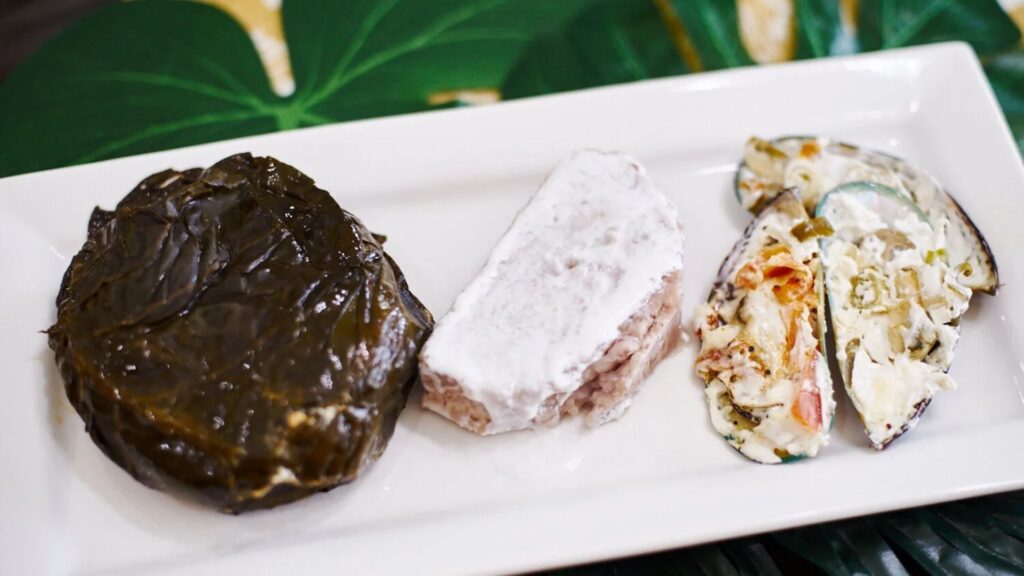
Tonga’s traditional attire remains part of daily and formal life. The taʻovala, a woven mat worn around the waist, signifies respect and status. It is worn during church, ceremonies, and even at work.
For travelers, witnessing these customs isn’t merely observation; it’s participation in a living heritage that has survived modern pressures without losing its essence.
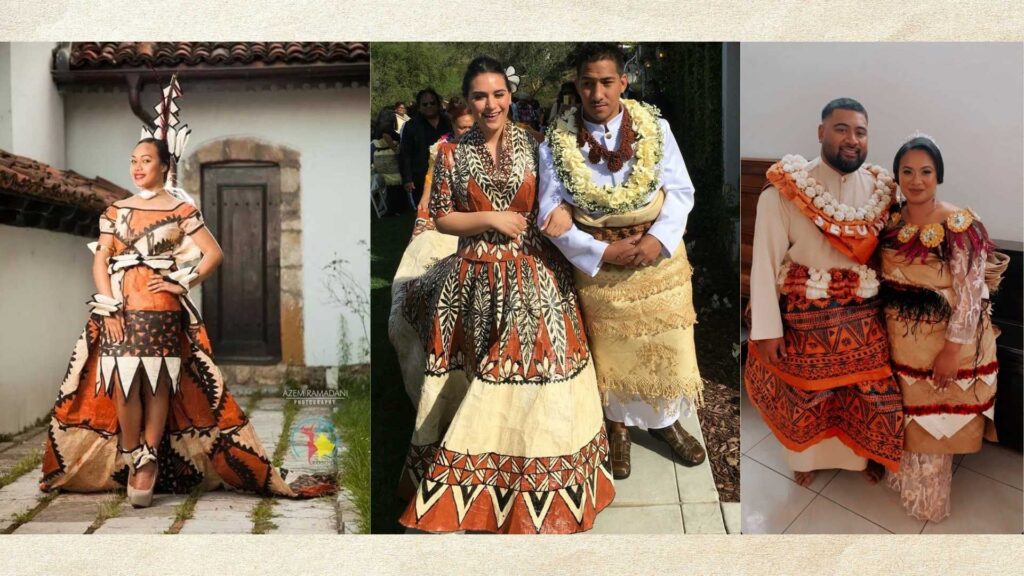
Modern Life and the Economy of Tonga
Life in Tonga today is a blend of ancient tradition and modern adaptation. Despite the waves of globalization, the Tongan People have preserved a rhythm that feels timeless, measured, community-driven, and spiritually grounded.
Everyday Life in the Islands
In Nukuʻalofa, mornings open with lively markets and neighborly greetings. Many Tongans work in education, government, or family businesses, while others still rely on agriculture and fishing — proud links to their heritage.
Evenings bring music, prayer, and family meals beneath the stars. Life here moves slowly but meaningfully, guided by faith, respect, and togetherness.
The Role of the Economy and Remittances
Tonga’s small economy depends heavily on its global diaspora. Remittances from overseas Tongans account for over a third of the national income, supporting education and daily living.
Key industries include agriculture (coconuts, vanilla, kava), fishing, and tourism. Handicrafts like ngatu (bark cloth) and woven mats are both cultural treasures and export goods.
Tourism is growing steadily — visitors come for whale-watching in Vavaʻu, snorkeling, and authentic island experiences far from crowded resorts.
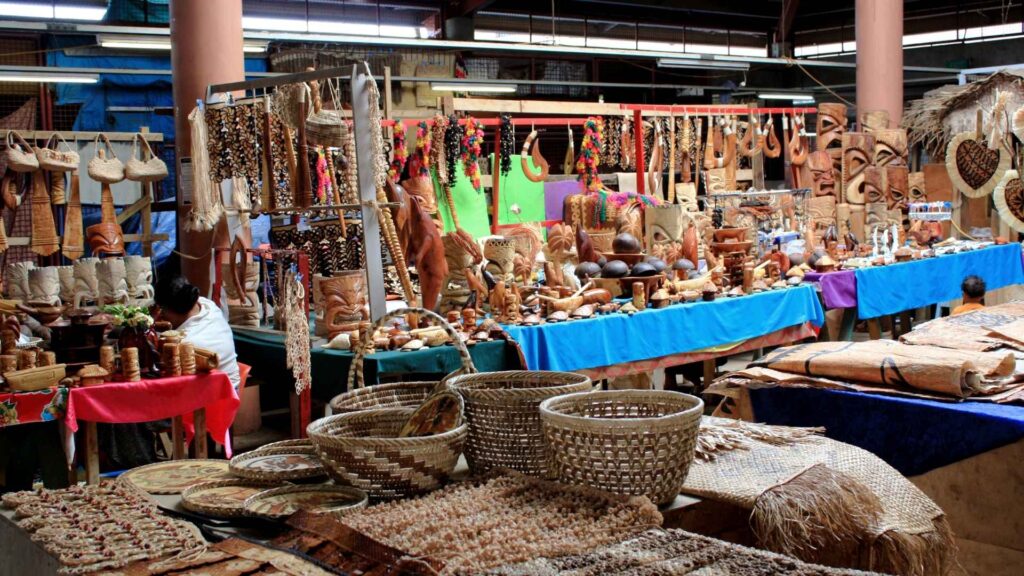
Challenges and Resilience
Like many Pacific nations, Tonga faces threats from climate change and rising sea levels. The 2022 volcanic eruption highlighted its vulnerability but also its unity.
Recovery reflects the Tongan value of fetokoniʻaki — “helping one another.” Through faith and cooperation, the islands continue to rebuild and thrive.
The Global Influence of the Tongan People
While Tonga’s population is modest, its cultural and human impact spans oceans. The Tongan diaspora has become a bridge between the islands and the wider world.
Tongans Abroad
In New Zealand, Tongans are one of the fastest-growing Pacific communities, celebrated for their vibrant festivals, church choirs, and contributions to education and public service.
In Australia and the United States, especially in states like California, Utah, and Hawaii, Tongan communities have built strong networks centered on faith and family.
Remittances aside, the diaspora plays a vital role in preserving culture abroad – passing on language, dance, and customs to younger generations born far from the islands.
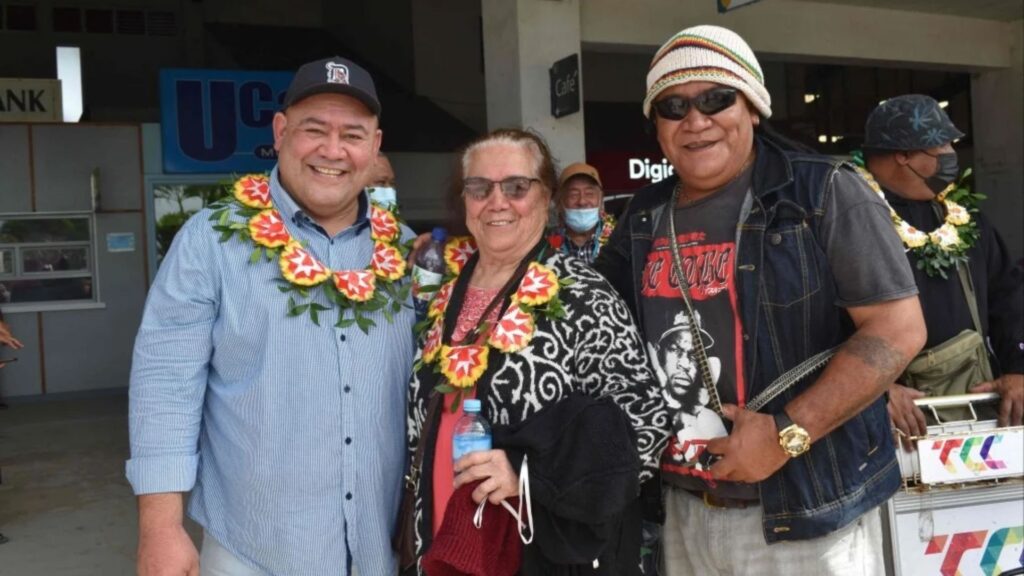
Global Sports and Culture
Tongans have achieved international recognition in sports far beyond their homeland. From rugby fields in New Zealand to sumo rings in Japan, Tongan athletes are admired for their strength and spirit.
Names like Israel Folau, Jason Taumalolo, and even Olympic flag-bearers who proudly appeared in traditional taʻovala have helped bring Tongan pride to a global stage.
Music and art also carry Tonga’s essence across borders. Traditional choirs, drumming ensembles, and contemporary Pacific artists blend modern genres with ancient rhythms, keeping the island’s soul alive through creativity.

Cultural Ambassadors of the Pacific
For travelers and anthropologists alike, the Tongan People represent the heart of Polynesian identity, making it a culture that thrives on connection, storytelling, and reverence for ancestry. The preservation of language, dance, and monarchy makes Tonga a living museum of Pacific heritage.
Wherever Tongans go, they bring the warmth of the islands with them: genuine smiles, a sense of community, and the belief that humanity is bound by respect and kindness.
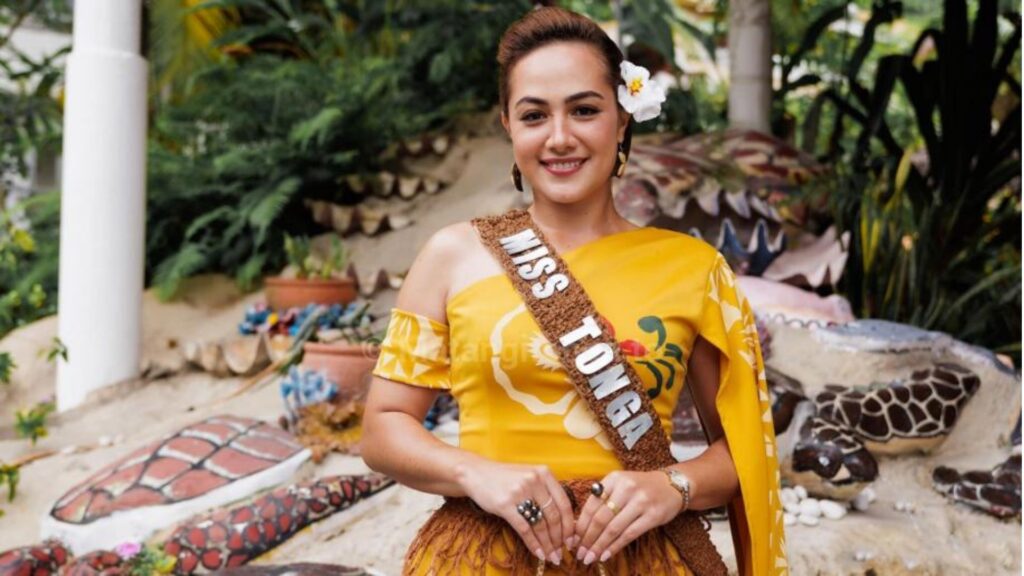
The Enduring Spirit of the Tongan People
The Tongan People stand as guardians of a legacy shaped by the sea, faith, and family. Their islands may be small, but their cultural depth is vast. Every handshake, every smile, and every shared meal reflect a worldview anchored in kindness —a belief that humanity thrives when people care for one another.
For travelers, Tonga is not just another tropical paradise; it’s a lesson in how to live fully and meaningfully. Here, life slows down, conversations matter, and community is sacred.
As the sun sets over Tongatapu or Vavaʻu, painting the ocean in gold and violet hues, visitors often feel an unspoken truth: the real beauty of Tonga is not in its beaches or coral reefs, but in the hearts of its people.
To understand the Tongan People is to glimpse what it means to live in harmony with nature, with family, and with the soul of the Pacific itself.
FAQs About the Tongan People
1. Who are the Tongan People?
The Tongan People are the indigenous Polynesian people of the Kingdom of Tonga, known for their deep cultural traditions, hospitality, and strong Christian faith.
2. Where is the Kingdom of Tonga located?
Tonga lies in the South Pacific Ocean, between Fiji and Samoa, and comprises about 170 islands, of which only 36 are inhabited.
3. What language do Tongans speak?
Tongans speak Tongan (lea faka-Tonga) and English. The Tongan language is rich in oral expression, poetry, and ceremonial greetings.
4. What is “Anga Fakatonga”?
“Anga Fakatonga” means The Tongan Way – a philosophy emphasizing respect, humility, family, and community service.
5. Why is Tonga called “The Friendly Islands”?
Captain James Cook gave the name in the 18th century after experiencing the generous hospitality of the Tongan People during his visits.

I am a cultural historian and editor with over 10 years of research into pre-contact Polynesian history, the Lapita migration, and oral traditions. Share the excitement of my latest publications.
My contact:
Email: [email protected]
Tel: +64 21 456 7890

